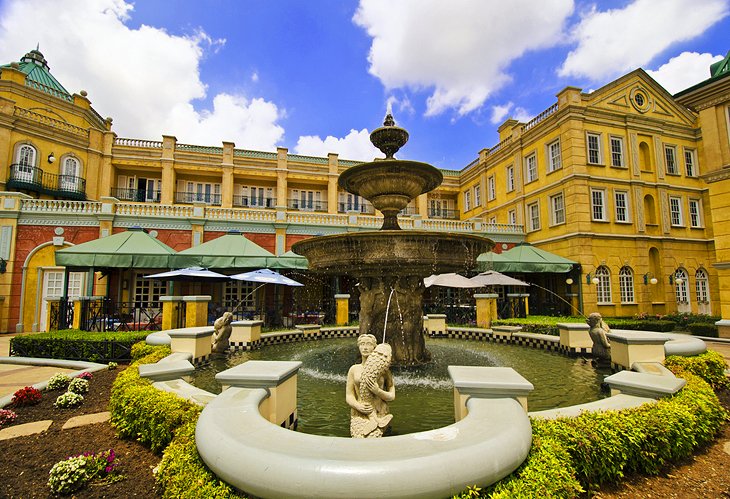How Johannesburg North Attractions can Save You Time, Stress, and Money.
Wiki Article
Johannesburg North Attractions - Truths
Table of ContentsSee This Report on Johannesburg North AttractionsThings about Johannesburg North AttractionsRumored Buzz on Johannesburg North AttractionsJohannesburg North Attractions Can Be Fun For EveryoneAn Unbiased View of Johannesburg North AttractionsGetting My Johannesburg North Attractions To Work7 Easy Facts About Johannesburg North Attractions Shown
You must maintain safety and security in mind and vacationers need to continue to be alert at all times when in unknown surroundings. Speak with the citizens when you are in community to learn about the area you are staying in. Johannesburg North attractions. When on the road (this does not put on mall and other safe and secure environments) best general recommendations is to attempt your finest to resemble a local and to avoid showing any kind of form of riches
Get This Report about Johannesburg North Attractions
Teacher Revil Mason O. J. (Thomson, 1946) discovered the Witwatersrand's pre-colonial background. His historical job took off the 'em pty land' misconception, according to which the area was empty of human habitation before the arrival of European inhabitants. In his magazines Prehistory of the Transvaal: A Record of Human Activity (1962) and Origins of Black People of Johannesburg and the Southern Western Central Transvaal Advertisement 3501880 (1986 ), Teacher Mason demonstrated the extent of social and financial growth in the location prior to Europeans established foot here.

Little Known Questions About Johannesburg North Attractions.
He showed the federal government's authorization, granted after he had testified keep his discoveries trick. In 1874, small mining operations were started in the Magaliesberg, where an Australian, Henry Lewis, had discovered gold deposits. In 1878, David Wardrop discovered gold in quartz veins at Zwartkop, north of Krugersdorp. In 1881, Stephanus Minnaar came throughout gold on the farm Kromdraai, near the Cradle of Mankind.In March 1886, an outcropping (soon to be called the Main Coral reef) was located, quite fortunately, on Gerhardus Oosthuizen's ranch Langlaagte. Some claim that the Lancastrian coal miner George Pedestrian discovered this coral reef. One more itinerant English prospector, George Harrison (that had previously worked in Australian mines) gotten a prospecting licence in respect of Langlaagte in Might 1886.
He decided to proceed in a pursuit for greener fields, and disposed of his Langlaagte case for the handsome sum of 10. Alas: underneath lay the richest goldfield ever located. The discovery of this abundant auriferous coral reef prompted a gold thrill that signalled the end of agrarian tranquillity in the southern Transvaal.
It would, within six years, end up being the biggest town in southern Africa. Within a years, it would certainly make the Z. A. R. up until after that an anarchical and bankrupt little state the wealthiest country in Africa. By the millenium, the Z. A. R. was to exceed Russia, Australia and the United States of America to end up being the globe's leading gold producer, generating more than a quarter of the globe's gold.
The Only Guide for Johannesburg North Attractions
It was called Ferreira's Camp, called after Colonel Ignatius Ferreira. He was a Boer traveler upon whom the British authorities had presented the condition of Buddy of one of the most Distinguished Order of St Michael and St George (qualifying him to the post-nominal letters C. M. G.) in thankfulness for his role in the battle that had deposed the Pedi king Sekhukhune in 1879.Soon the camp was bristling with camping tents and wagons as novices showed up daily from far and wide. By September 1886, some 400 discover here individuals lived in Ferreira's Camp, which quickly flaunted upraised iron and hardwood structures. Two other camps were developed: Meyer's Camp on the ranch Doornfontein, and Paarl Camp. The latter was nicknamed Afrikander Camp; many individuals from the Cape Colony resolved there.

The 30-Second Trick For Johannesburg North Attractions
This name gained currency by word of mouth, such that the State Assistant affirmed the name to the Mining Commissioner on 9 October 1886. Stands in the town were auctioned on 8 December 1886. While some stands were marketed for 10, others were knocked down for as little as sixpence.Two years later, these erven were to change hands for as much as 750 each. The tented camps diminished as a dorp of corrugated iron structures created and expanded north of the mines located along the Key Reef Roadway. Locations such as Jeppe's Town (where working-class immigrants erected their houses) and Doornfontein (where the upscale new 'Randlords' began to construct their opulent homes) were soon contributed to the ever-expanding map of the community.
The Johannesburg North Attractions Statements
Apart from the Our site road names, there were no signs of Johannesburg being positioned in a Dutch-speaking country., nearly every person talked English and also the Federal government slaves dealt with one in English, unless they were first attended to in the Taal (or Reduced Dutch)'.Thus, Britain had a passion in guaranteeing ideal problems for gold production on the Witwatersrand, and that the gold was exported to London instead of Berlin an essential made even more clamant by the Z. A. R - Johannesburg North attractions.'s increasing toenadering with Germany. Mine proprietors got on a crash course with President Kruger, whose policy of monopolistic giving ins (typically provided to his cronies) prevented mining business from obtaining supplies of materials (specifically dynamite) and labour by themselves, more affordable terms
Rumored Buzz on Johannesburg North Attractions
In 1890, the Volksraad had actually restricted the franchise to white males that had lived in the Z. A. R. for fourteen years or longer, hence invalidating the majority of the immigrants (who took place to be the major factors to the fiscus). Nevertheless, agitation for the ballot was a simple pretext for advertising a different agenda; most uitlanders regarded themselves as short-lived visitors and had no purpose of continuing to be in the Z.Report this wiki page